
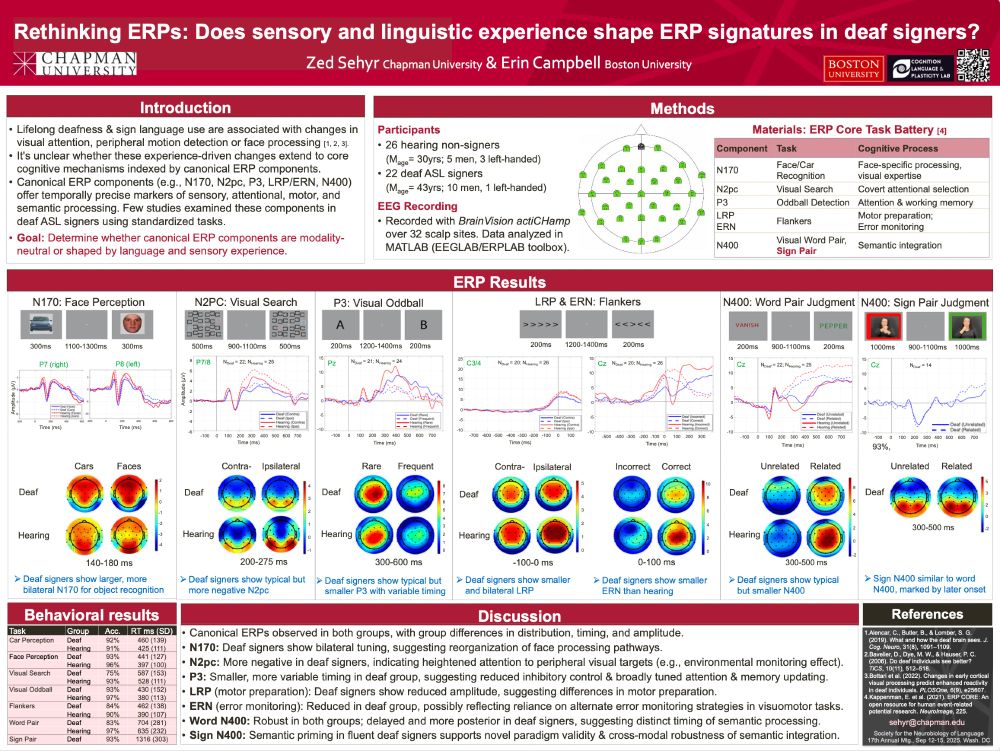
An effect that is specific to words that are exclusively visual (and don’t really have a auditory/ tactile/olfactory/etc association)
But!! Blind children still do produce words like “blue” or “see” as early as 16 months!
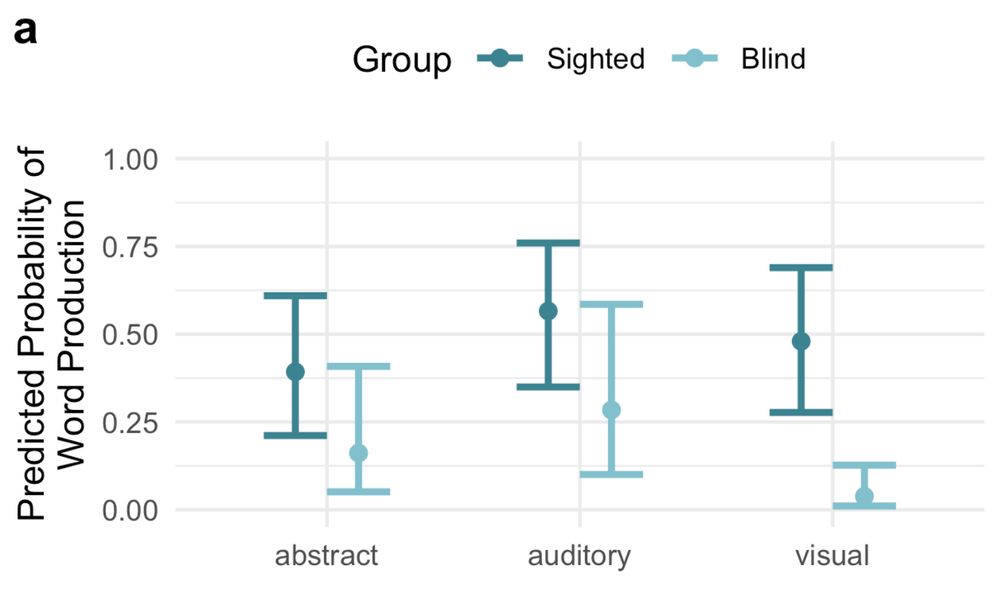

An effect that is specific to words that are exclusively visual (and don’t really have a auditory/ tactile/olfactory/etc association)
But!! Blind children still do produce words like “blue” or “see” as early as 16 months!
Based on verb tense, we found that parents of blind kids seem to talk more about past, future, and hypothetical events than parents of sighted kids
We saw no difference in the amount that parents used highly-visual words (see, mirror, blue, sky)
7/N
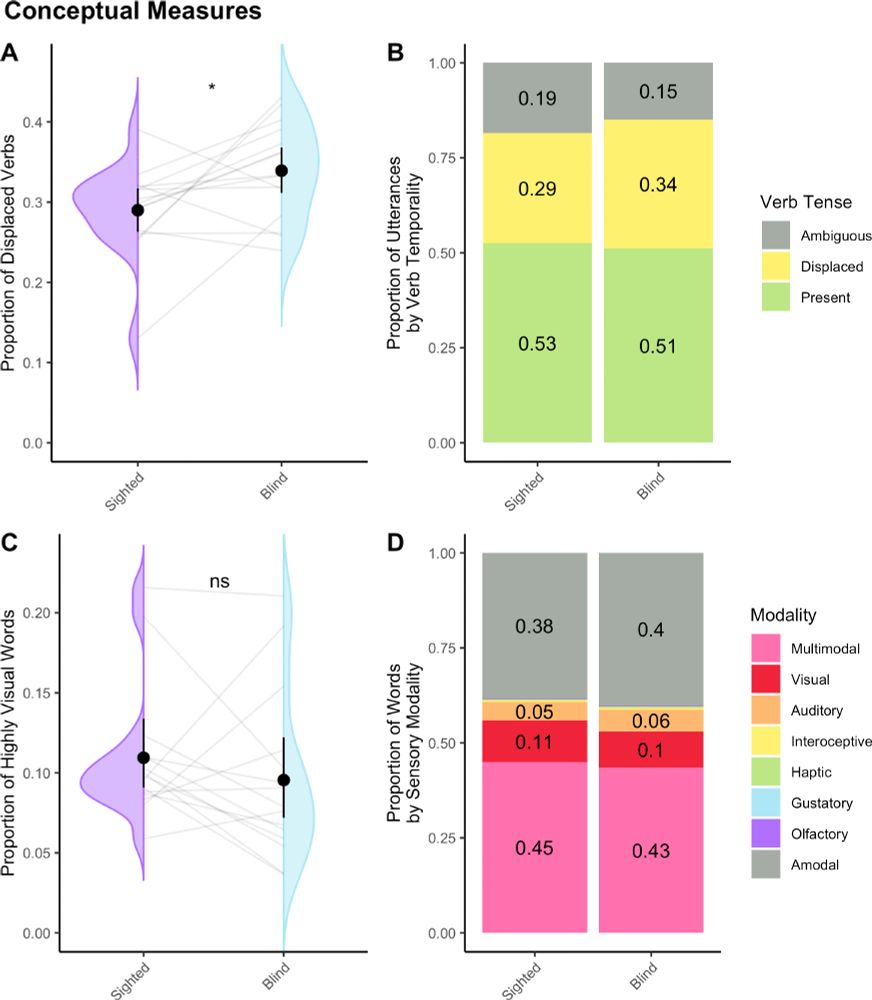
Based on verb tense, we found that parents of blind kids seem to talk more about past, future, and hypothetical events than parents of sighted kids
We saw no difference in the amount that parents used highly-visual words (see, mirror, blue, sky)
7/N
No and no: Similar MLU and TTR across groups.
6/N
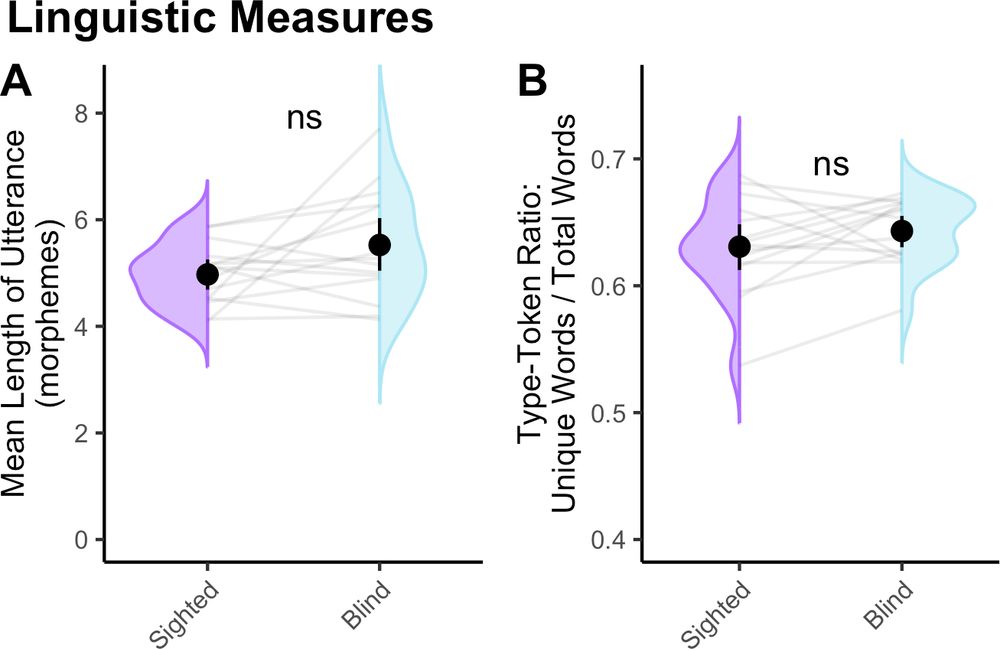
No and no: Similar MLU and TTR across groups.
6/N
Nope! Blind and sighted kids participate in a similar number of conversational turns and get a similar amount of speech directed *to* them (as opposed to directed to adults, etc.)
5/N

Nope! Blind and sighted kids participate in a similar number of conversational turns and get a similar amount of speech directed *to* them (as opposed to directed to adults, etc.)
5/N
Nope! Doesn’t seem to matter if we measure it with LENA’s automated word count (left) or by counting the words in our transcriptions (right). Kids vary a lot in the number of words they hear, but that doesn’t vary by group.
4/N
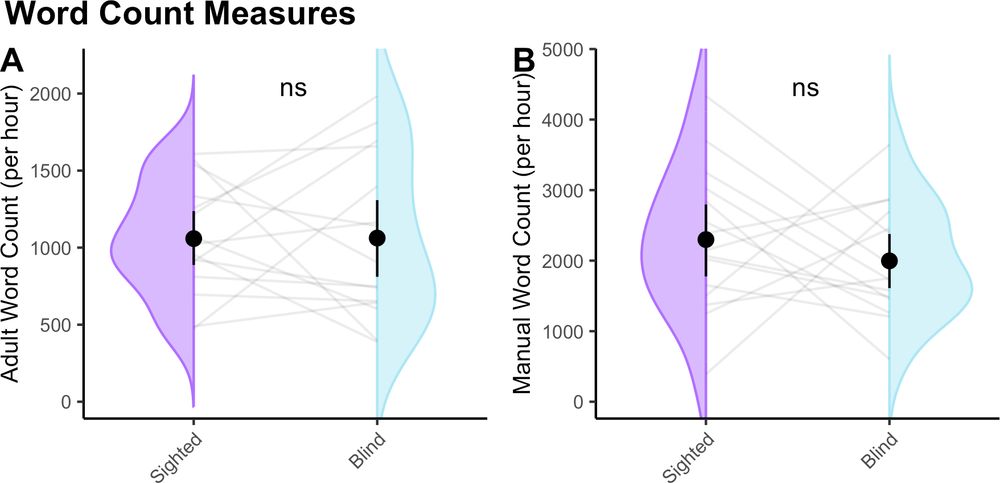
Nope! Doesn’t seem to matter if we measure it with LENA’s automated word count (left) or by counting the words in our transcriptions (right). Kids vary a lot in the number of words they hear, but that doesn’t vary by group.
4/N
→ 1200 minutes of fully transcribed speech, ~ 65000 words
3/N
→ 1200 minutes of fully transcribed speech, ~ 65000 words
3/N
(This involved driving hours to homes, yoga classes…mailing recorders to families during the pandemic and becoming close friends with the Durham Pack & Ship…)
actual photo of me 4th year grad school
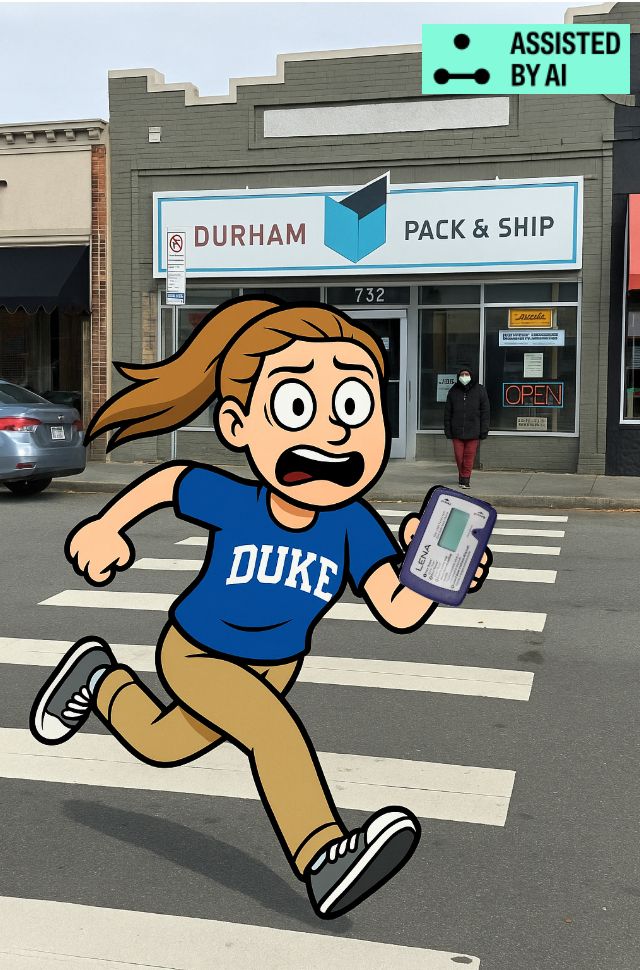
(This involved driving hours to homes, yoga classes…mailing recorders to families during the pandemic and becoming close friends with the Durham Pack & Ship…)
actual photo of me 4th year grad school
🔊 pop–bop–beep
🗣️ squeal–squeak–squawk
We also see clusters that look more like morphology:
🏆win–won
👩🔬físico–químico
Or etymology:
🗽plastic–plaster
🪷apatía–simpatía
8/N


🔊 pop–bop–beep
🗣️ squeal–squeak–squawk
We also see clusters that look more like morphology:
🏆win–won
👩🔬físico–químico
Or etymology:
🗽plastic–plaster
🪷apatía–simpatía
8/N
ASL’s lexicon showed densely-connected iconic clusters—unlike English and Spanish, which had fewer and smaller pockets of form-meaning alignment.
(In the graph below, magenta are iconic signs and aqua are non-iconic)

ASL’s lexicon showed densely-connected iconic clusters—unlike English and Spanish, which had fewer and smaller pockets of form-meaning alignment.
(In the graph below, magenta are iconic signs and aqua are non-iconic)
6/N
6/N
For example:
🌧️ Weather signs (WIND, CLOUD, RAIN) are made with two open hands in the space in front of the signer's body
5/N
For example:
🌧️ Weather signs (WIND, CLOUD, RAIN) are made with two open hands in the space in front of the signer's body
5/N
4/N

4/N
We study the prevalence of iconicity (does a word look/sound like what it means?) and systematicity (are pronunciation/meaning relationships shared across multiple words?) in large datasets of ASL, English, and Spanish.
🧵1/N
We study the prevalence of iconicity (does a word look/sound like what it means?) and systematicity (are pronunciation/meaning relationships shared across multiple words?) in large datasets of ASL, English, and Spanish.
🧵1/N
But on the whole, words with 🦋 visual 🦋 meanings were much more likely to be part of their vocabulary than abstract or auditory words.
6/N

But on the whole, words with 🦋 visual 🦋 meanings were much more likely to be part of their vocabulary than abstract or auditory words.
6/N
A possible effect of delayed access to language?
5/N

A possible effect of delayed access to language?
5/N
we found that blind children were *less* likely than their sighted peers to say visual words, but *did not differ* on abstract or auditory words.
(Speculation: I think the sighted bars are higher due to a slight vocab delay for blind kids)
4/N

we found that blind children were *less* likely than their sighted peers to say visual words, but *did not differ* on abstract or auditory words.
(Speculation: I think the sighted bars are higher due to a slight vocab delay for blind kids)
4/N
- Blind children and vocabulary-size-matched sighted children
- Deaf children with cochlear implants 🦻 and vocab-size-matched hearing peers
- Deaf children with late exposure to sign language 🤟, and vocab-size-matched deaf children with sign language exposure from birth 🤟
2/N

- Blind children and vocabulary-size-matched sighted children
- Deaf children with cochlear implants 🦻 and vocab-size-matched hearing peers
- Deaf children with late exposure to sign language 🤟, and vocab-size-matched deaf children with sign language exposure from birth 🤟
2/N

